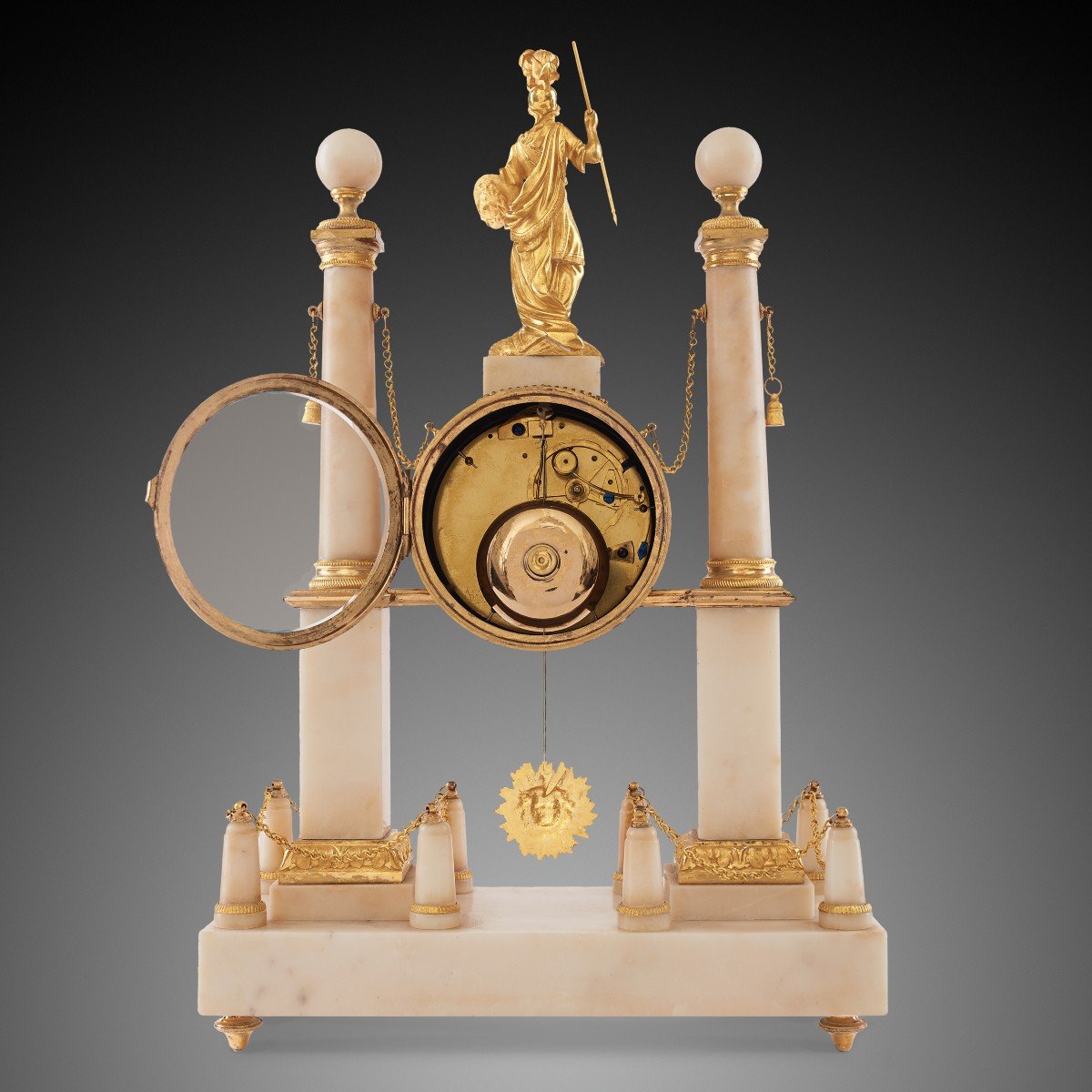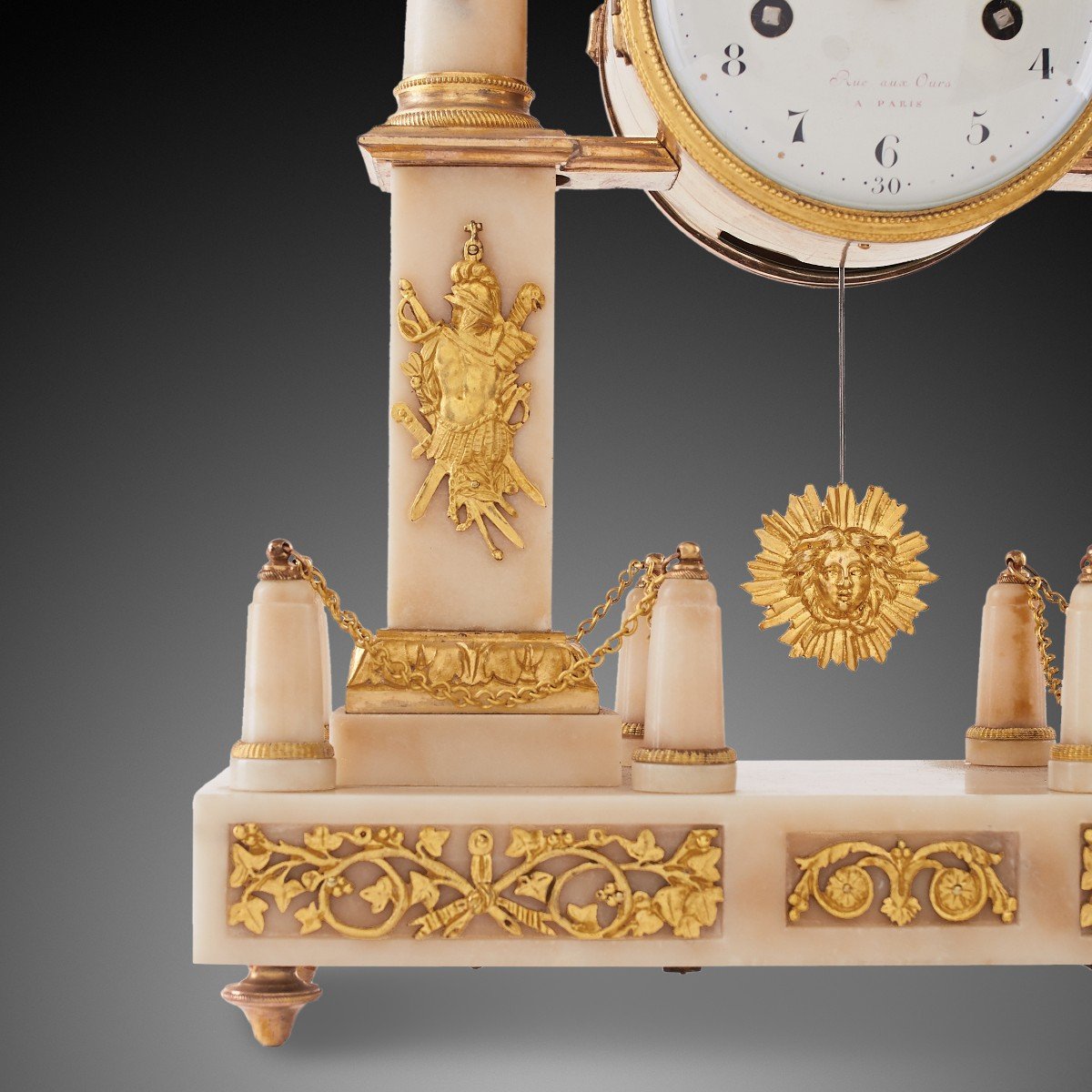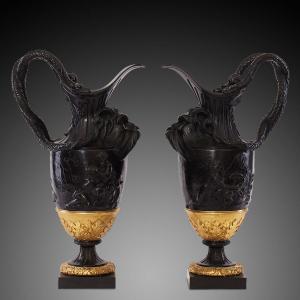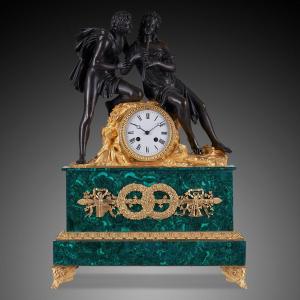Royal Antique is proud to present this elegant Louis XVI style portico clock, signed on the dial "Gavelle Le, Rue aux Ours". Dating from the 18th century, this marble clock embodies the refinement of Neoclassicism, characterized by its symmetry, measured grandeur, and direct inspiration from Antiquity.
Composition and Allegory:
Architectural Structure: The clock is composed of a portico structure with two columns in the shape of white marble obelisks, topped with marble spheres and gilt bronze capitals.
Figure of Minerva/Athena: A majestic gilt bronze statue of the goddess Minerva (or Athena for the Greeks) crowns the ensemble. Depicted with a shield and a spear in her hands, she symbolizes wisdom, war, victory, and justice—virtues highly prized during the reign of Louis XVI, where antiquity inspired most of the elements, including the symbolism behind Greco-Roman religious figures.
Suspended Dial: A round, suspended white enamel dial is protected by a glass lens with an oval gilt bronze frame. Arabic numerals indicate the hours and minutes.
Medusa Head Pendulum: A free-swinging Medusa head pendulum gracefully hangs below the dial, adding a classical mythological touch.
Classical Ornaments: Gilt bronze mounts on the front of the columns feature motifs of ancient Greek weaponry (swords, armor, helmets). The upper part of the columns is adorned with a golden cornice with a leaf pattern, and the base of the dial is embellished with marble fence pillars connected by fine chains.
Detailed Base: The clock's base features finely chased gilt bronze friezes with vine and arch patterns, all supported by bun feet.
Historical Context and Decorative Impact:
This exceptional timepiece is a testament to the refined taste of the 18th century and the dawn of French Neoclassicism. It would be a valuable addition to the home of any discerning collector, bringing a touch of historical elegance and sophistication to any interior.


































 Le Magazine de PROANTIC
Le Magazine de PROANTIC TRÉSORS Magazine
TRÉSORS Magazine Rivista Artiquariato
Rivista Artiquariato